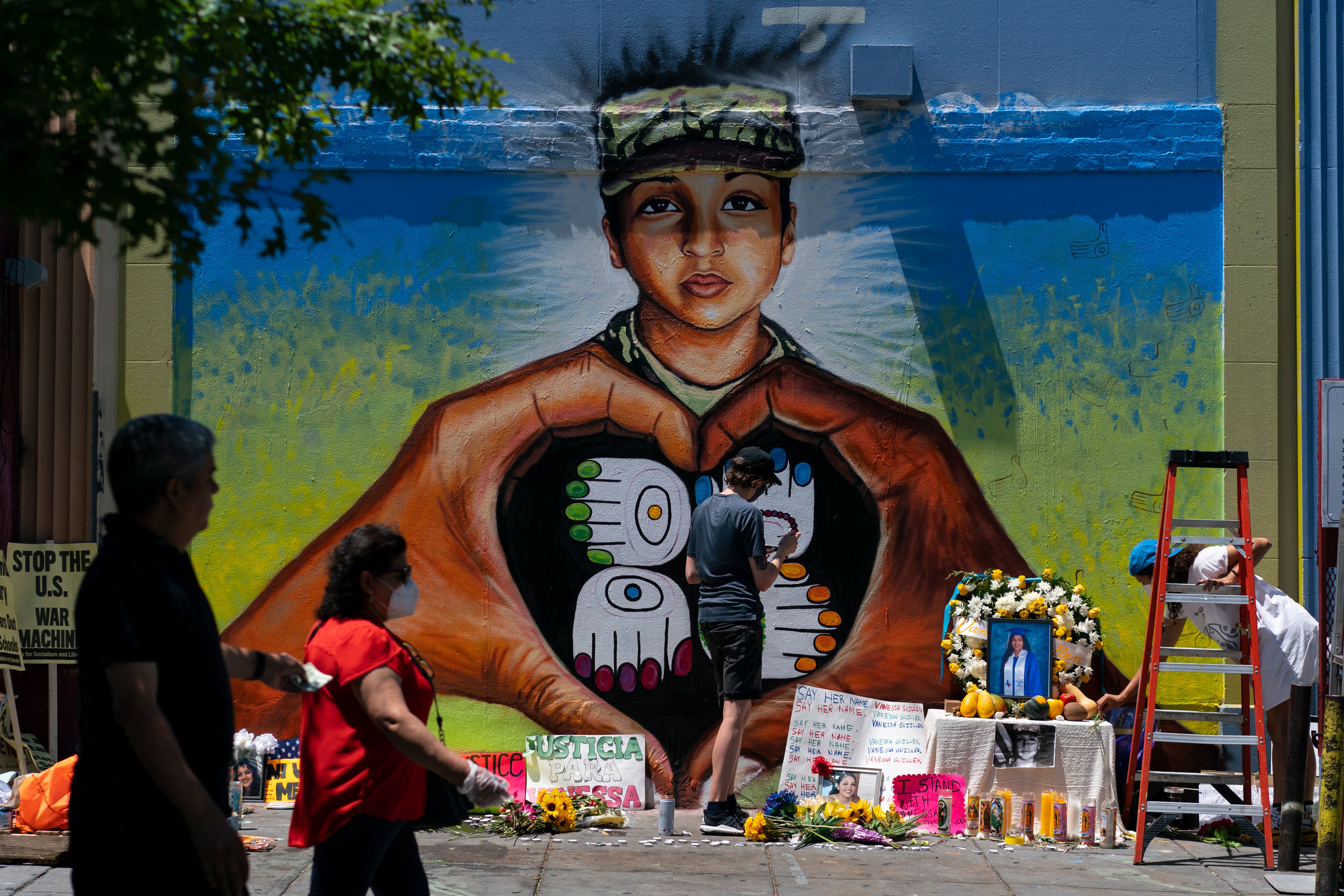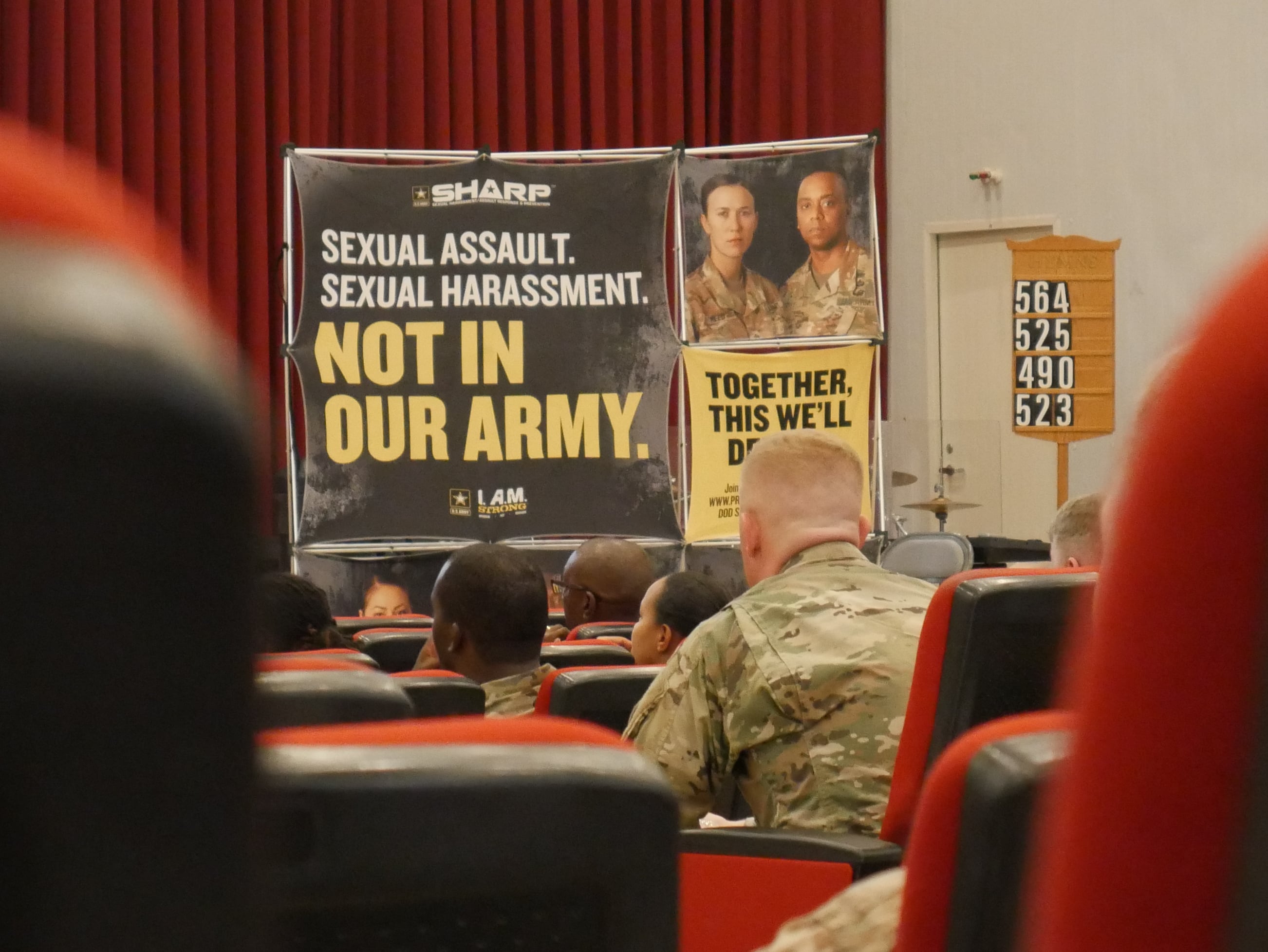Fort Hood and Fort Bliss, Texas, top the list of Army installations where women are at the highest risk for sexual assault, taking into account several factors, according to a Rand Corp. study released Friday. Fort Riley, Kansas; Fort Campbell, Kentucky; and Fort Carson, Colorado, round out of the top five.
Researchers concluded that large numbers of young and inexperienced soldiers could account for those risks, but so, too, can toxic command climates and proximity to combat arms units.
“For example, we estimated that the total sexual assault risk to Army women at Fort Hood during fiscal year (FY) 2018 was 8.4 percent,” according to the report. “By comparison, the average total risk to all women in the Army during this period was 5.8 percent, almost one-third lower.”
The study is part of a larger Army G-1 project dubbed “Identifying Army Organizational Factors Contributing to Sexual Assault Risk,” a focus point for the Army in the wake of the death of Spc. Vanessa Guillen at Fort Hood last year.
“Fort Hood and Fort Bliss have large numbers of young, unmarried, less-educated, and junior ranking soldiers, who are known to be at higher risk of sexual assault,” according to the report. “This raises the question of whether groups — such as installations — with higher risk estimates have soldiers assigned to them who are at higher risk because of their individual characteristics, or whether their personnel would be expected to experience lower risk if stationed at another base.”
Even when compared to only other posts of similar size and demographics, researchers estimate that women at Ford Hood are still at a 1.7-percent increased risk of sexual assault.
Researchers then adjusted their calculations for those at-risk characteristics ― age, marital status and so on ― and found a completely different set of high-risk posts for women and men of any demographic.
For women, Fort Drum, New York; Fort Lewis, Washington; and Okinawa, Japan, posed the greatest sexual assault risk. For men, it was Fort Drum; Osan, South Korea; and Italy in general.
“This suggests the possibility that bases, commands, and CMFs with larger proportions of women who live on a base face higher sexual assault risks than would otherwise be expected given their personnel characteristics,” according to the report. “Similarly, more deployments and environments with greater proportions of combat arms occupations are associated with increased adjusted risk for women.”
RELATED

Deployments, more broadly, presented a higher risk for harassment among both genders.
“Higher operational tempo — defined as days deployed on a Global War on Terrorism mission — is also associated with higher adjusted sexual assault risk and sexual harassment risk among women and higher sexual harassment risk among men,” the report reads.
The study also examined military occupational specialties, with data showing that women in field artillery and engineering are at the highest risk for sexual assault ― for example, 10.6 percent for field artillery.
However, calculating risk by MOS is challenging, because some career fields have too few women to represent a significant sample.
“Field artillery was the first combat [career management field] opened to women, and the only one with sufficient numbers of women to allow estimates of risk by the period covered by this project,” the report stated, meaning combat MOSs like infantry and armor can’t yet be evaluated.

Elsewhere, the study confirmed what other research and experts have long emphasized: toxic command climates mean higher risk of assault, and where sexual harassment is a problem, sexual assault is disproportionately higher.
“Notably, sexual harassment is more common than sexual assault in the Army, but our results also showed that the risk of sexual harassment is highly correlated with the risk of sexual assault,” the report reads. “Thus, bases with high sexual assault risk have high sexual harassment risk, and those with low sexual assault risk have low sexual harassment risk.”
In other words, a command that tolerates harassment is more like to foster assaults.
“For example, more-positive unit climate and supervisor climate scores are associated with lower adjusted sexual assault and sexual harassment risk among women and lower adjusted sexual harassment risk among men,” according to the report.
Rand researchers recommend that the Army create a strategy that takes into account the disproportionate ways that sexual assault and harassment can affect soldiers.
For example, they could mine the Defense Equal Opportunity Employment Survey for units, MOSs or other groups with greater harassment and assault reports.
“The Army should investigate the differences in soldiers’ experiences in similar groups with different risk profiles, such as the 2nd Infantry Division and the 4th Infantry Division, to understand what differences in work life, social life, culture, or climate could be contributing to women’s risk exposure,” the report reads.
Army leaders could then develop targeted programs to improve the climates for those groups, and follow that up with briefing materials for incoming commanders, so they are aware of the unit’s issues and attempts to address them.
“Decision makers should share historical sexual assault and sexual harassment risk information with unit commanders,” the report added. “Doing so can forewarn commanders of known problems that are likely to persist within their units. This information can sensitize the commanders to the possible need for special prevention measures and prepare them to address problems quickly.”
Meghann Myers is the Pentagon bureau chief at Military Times. She covers operations, policy, personnel, leadership and other issues affecting service members.





